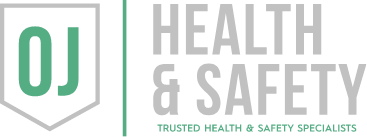As a first-aid trainer, I’ve heard all sorts of first aid myths over the years. Some are inconsequential, but others could put people at real risk. That’s why I wanted to write this blog — to clear up a few of the most common misconceptions I’ve come across in the workplace.
In my opinion, the more people understand about first aid, the more confident and prepared they’ll feel when it really matters.

Myth 1: “You Can’t Do CPR Without a Certificate”
I hear this one all the time, and honestly, it’s just not true. You don’t need a certificate to do CPR. If someone collapses and isn’t breathing, your help could keep them alive until emergency services arrive.
I would recommend having trained first aiders in your workplace, but even if you’re untrained, doing chest compressions can still make a difference.
Tip: Push hard and fast in the centre of the chest to the beat of “Stayin’ Alive” – it really works!
Myth 2: “First Aid Is Only the Employer’s Responsibility”
While employer duties are clear under health and safety law, I think it’s a shared duty. Everyone should know what to do in an emergency.
I’ve previously seen situations where the trained first aider wasn’t around, and someone else had to step in. If they hadn’t known what to do, things could have ended very differently.
Tip: Ask your employer if you can join the next first aid training session. It might be more useful than you think.

Myth 3: “Always Use a Tourniquet to Stop Bleeding”
This one worries me. Tourniquets are only for life-threatening bleeds and should be used with care. For most injuries, a clean bandage and firm pressure is enough.
In my opinion, it’s more important to stay calm and stop the bleeding safely than to reach for extreme solutions.
Tip: Raise the wounded area if possible, and apply constant pressure until help arrives.
Myth 4: “You’ll Be Sued If You Get It Wrong”
I’ve spoken to many people who are afraid to help because of this myth. But the truth is, Good Samaritan laws are designed to protect people who try to assist in good faith.
I would recommend acting if you feel able — doing nothing can have far worse consequences than doing your best.
Tip: First aid isn’t about being perfect. It’s about stepping in and giving someone a chance.

Myth 5: “First Aid Training Is Boring and Useless”
This one always makes me smile. I think people are surprised by how engaging and practical our sessions actually are.
I have previously seen total beginners leave a course full of confidence. They’re ready to handle burns, breaks, CPR, and more. Knowing what to do in an emergency really does empower people.
Tip: Book a course for your team. You’ll probably have a laugh, and you’ll definitely learn something useful.
Final Thoughts
Understanding the truth behind these first aid myths is just the start. I’d always encourage you to keep learning and to refresh your knowledge regularly.
Whether you’re an employer looking to meet your employer duties, or just someone who wants to help, there’s always more to know.
If you’re unsure where to begin, get in touch — I’d be happy to help guide you or your workplace through the next steps.
